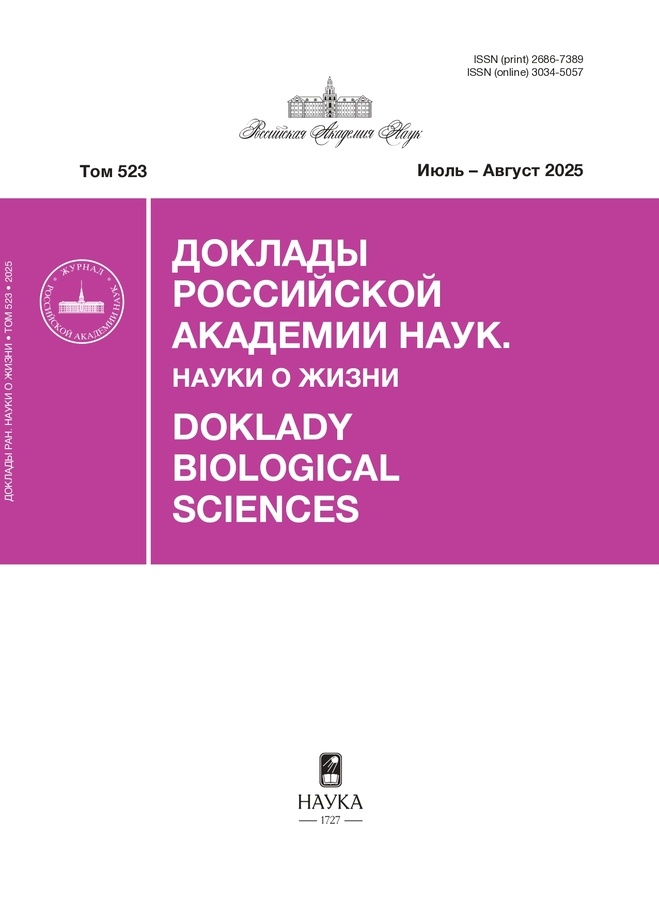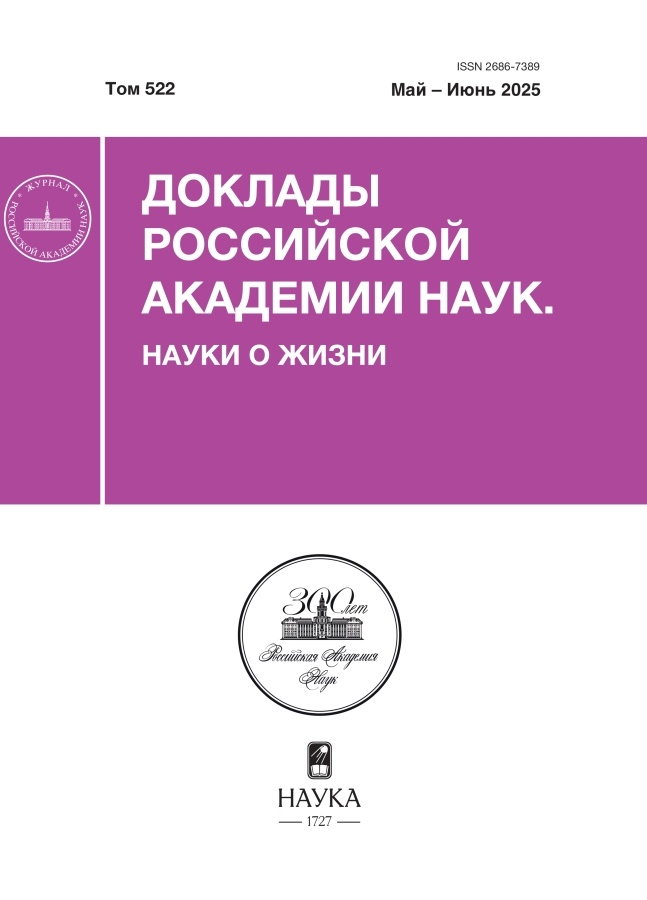Finding eggs of the trematode Echinochasmus sp. (Trematoda, Echinochasmidae) in the north of Western Siberia in the late Holocene
- Authors: Sivkova T.N.1, Kosintsev P.A.2, Krapivina V.V.1
-
Affiliations:
- Perm State Agro-Technological University
- Institute of Plant and Animal Ecology, Ural Branch, Russian Academy of Sciences
- Issue: Vol 522, No 1 (2025)
- Pages: 370-374
- Section: Articles
- URL: https://jdigitaldiagnostics.com/2686-7389/article/view/686383
- DOI: https://doi.org/10.31857/S2686738925030096
- ID: 686383
Cite item
Abstract
A parasitological analysis of 24 dog coprolite samples, 1 cultural deposit, and 4 dung samples obtained during excavations of the Mangazeya settlement (66°42’ N, 82°16’ E), the first Russian city of the 17th century (late Holocene) in the north of Western Siberia was performed. Helminth eggs were found in 26 (89.7%) samples. Echinochasmus sp. eggs were found in 48.3% of the samples: in the cultural deposit, in 2 dung samples, and in 11 dog coprolite ones. This genus is currently absent in the helminth fauna of the region. It could have entered the region with infected dogs, pigs, and humans who arrived to the region from European Russia. The introduction of the helminth did not lead to the formation of a new stable natural focus of echinochasmosis, which is associated with the unfavorable climatic conditions of the region.
Full Text
About the authors
T. N. Sivkova
Perm State Agro-Technological University
Email: kpa@ipae.uran.ru
Russian Federation, Perm
P. A. Kosintsev
Institute of Plant and Animal Ecology, Ural Branch, Russian Academy of Sciences
Author for correspondence.
Email: kpa@ipae.uran.ru
Russian Federation, Yekaterinburg
V. V. Krapivina
Perm State Agro-Technological University
Email: kpa@ipae.uran.ru
Russian Federation, Perm
References
- Хрусталев А.В., Савинецкий А.Б. Использование гельминтологического анализа ископаемых экскрементов животных для палеоэкологических исследований // Экология. 1990. № 4. С. 83–85.
- Слепченко С.М. Археопаразитология – новый источник реконструкции миграций древнего населения: возможности, результаты и перспективы // Вестник археологии, антропологии и этнографии. 2021. № 3(54). С. 147–162.
- Slepchenko S.M., Lobanova T.V., Vizgalov G.P., et al. Archeoparasitological data and pathoecology of the city of Mangazeya in Western Siberia in the 17th century // Journal of Archaeological Science: Reports. 2021. (35).
- Сивкова Т.Н., Косинцев П.А., Кардаш О.В. Палеопаразитологическое исследование копролитов собак (Canis familiaris L., 1758) из раскопок “Надымского городка” XVII-XVIII веков // Известия Самарского научного центра Российской академии наук. 2018. Т. 20. № 5(4). С. 621–625.
- Визгалов Г.П., Пархимович С.Г. Мангазея: новые археологические исследования (материалы 2001–2004 гг.). Екатеринбург-Нефтеюганск: Издательство Магеллан. 2008. С. 296.
- Beltrame M.O., Sardella N.H., Fugassa M.H., et al. Paleoparasitological analysis of rodent coprolites from the Cueva Huenul1 archaeological site in Patagonia (Argentina) // Mem.Inst.Oswaldo Cruz. 2012. Vol. 107. № 5. P. 604–612.
- Черепанов A.A., Москвин A.C., Котельников Г.А., др. 2002. Атлас. Дифференциальная диагностика гельминтозов по морфологической структуре яиц и личинок возбудителей. М.: Россельхозакадемия. С. 85.
- Ash L.R., Orikhel T.K. 2007. Atlas of Human Parasitology. Publishing House of the American Society of Clinical Pathology, Chicago. P. 540
- https://bigenc.ru/c/ekhinokhazmoz-fbecd0?ysclid=m84f0w2zve304975701 Дата обращения 13.03.2025
- Козлов Д.П. Определитель гельминтов хищных млекопитающих СССР. М.: Наука, 1977. С. 275.
- Андреянов О. Л., Успенский A.B., Сафиуллин Р.Т., др. Анализ гельминтофауны промысловых млекопитающих центрального региона России // Теория и практика борьбы с паразитарными болезнями. М., 2018. С. 20–22.
- Сивков Г.С., Сергушин А.В. Инвазионные болезни оленегонных собак и диких плотоядных Ямало-Ненецкого автономного округа // Сибирский вестник сельскохозяйственной науки. 2008. №4 (184). С. 96–99.
- Slepchenko S.M., Ivanov S.N. Paleoparasitological analysis of soil samples from the Kikki-Akki burial ground of the XVII–XIX centuries in Eastern Siberia, Russia // Scientific Archaeological Journal: materials. 2015. Vol. 2. P. 467–472.
- Slepchenko S.M., Slavinsky V., Tsybankov A.A. The traditional way of life of the population of the Taz Tundra: a paleoparasitological study // Korean Journal of Parasitology. 2016. Vol. 54. №5. P. 617–623.
- Буцинский П.Н. Заселение Сибири и быт ее первых насельников. Тюмень: Издательство Ю. Мандрыки, 1999. C. 328.
- Slepchenko S.M., Bugmyrin S.V., Kozlov A.I., et al. Comparison of helminth infection among the indigenous populations of the Arctic and subarctic regions of Western Siberia throughout history: parasitological studies based on modern and archaeological sources // Korean J. Parasitol. 2019. Vol. 57. №6. P. 607–612.
- Dolgin V. N., Sviridenko B. F. Freshwater mollusks of the Pur and Taz river basins (Western Siberia) // Bulletin of Tomsk State Pedagogical University. 2011. № 8(110). P. 89–92.
- Визгалов Г.П., Кардаш О.В., Косинцев П.А., др. Историческая экология населения севера Западной Сибири. Нефтеюганск, Екатеринбург: Издательство АМБ, 2013. C. 376.
- Бакулин В.В., Белецкая Н.П., Богданов В.Д., и др. Атлас Ямало-Ненецкого автономного округа. Омск: ФГУП “Омская картографическая фабрика”, 2004. C. 304.
- Сивкова Т.Н., Косинцев П.А., Крапивина В.В. Находка яиц нематоды Dioctophyme renale (Goeze, 1782) (Nematoda, Dioctophymidae) на севере Западной Сибири в позднем голоцене // Доклады Российской академии наук. Науки о жизни. 2024. Т. 519. № 1. С. 24–27.
Supplementary files

Note
Presented by Academisian of the RAS V.V. Rozhnov











